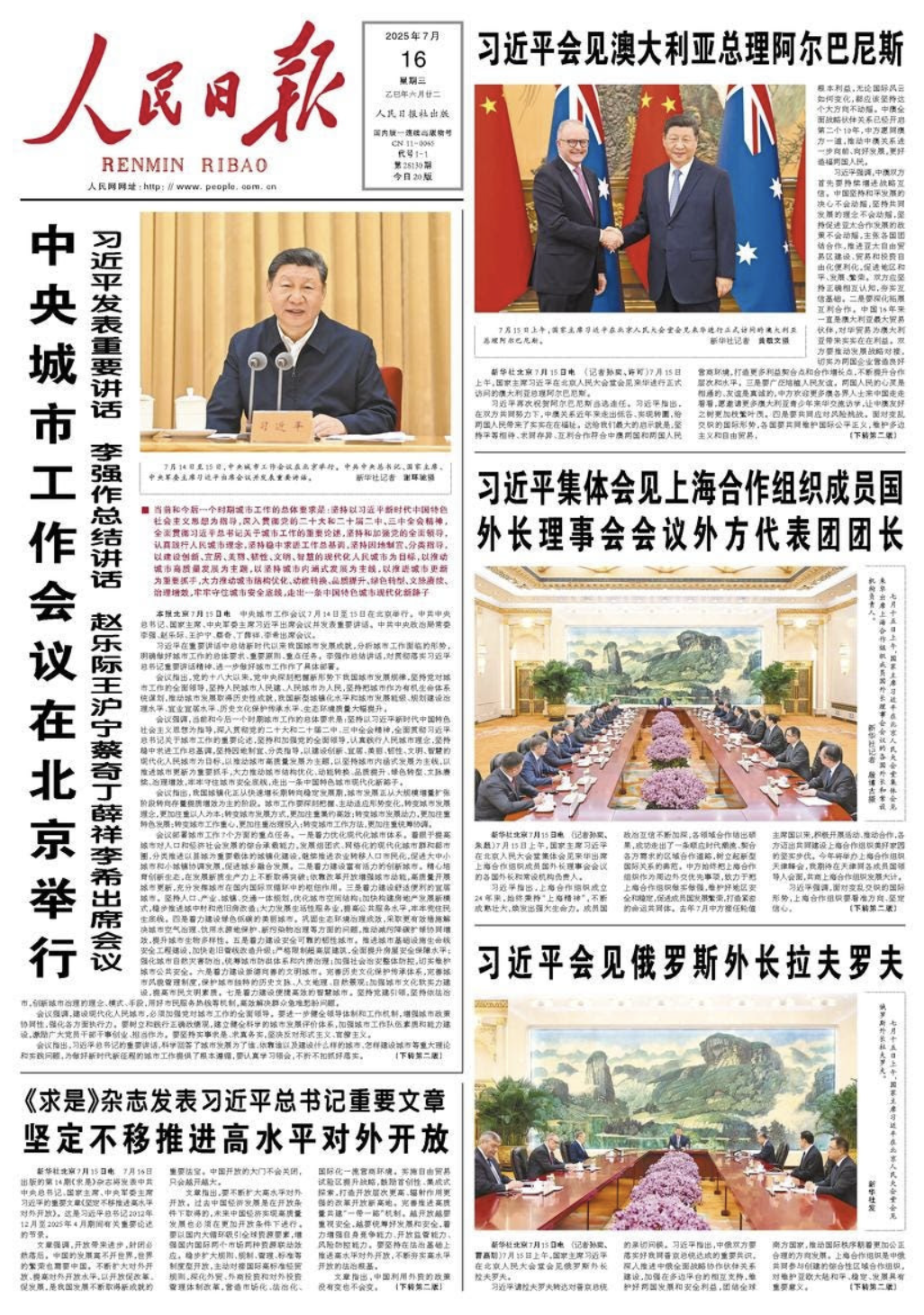Headline news: Australia and China
July 18, 2025
The People’s Daily of 16 July featured the meeting between President Xi Jinping and Prime Minister Anthony Albanese in top position on page one.
Xi Jinping had been very busy and other news items, including a national conference on urban development, a meeting with Russian Foreign Minister Sergey Lavrov and a discussion with ministers visiting for the Shanghai Co-operation Organisation, also figured. The Australian meeting clearly ranked higher in importance in the official Party newspaper.
The message to readers across China was clear: that Australia is a valued regional neighbour and that this high-level visit is very welcome. In other words, as Ambassador Xiao Qian wrote in the Australian media recently, Australia and China are “friends not foes”. From the Chinese side there could be no clearer intention to accentuate the positives of the prime ministerial visit.
The lead article on the front page of the Sydney Morning Herald for the same day was headlined “Trade to continue in tumult of tariffs”, referencing China without mentioning the word that would have upset the alliteration, and The Australian chose the letter U, “Unswerving, unnerving Xi”.
Trade and security are the main issues in the bilateral relationship, according to most Australian media commentators. Last year, Australian exports to China were worth A$196 billion, more than the next four largest markets combined. Trade certainly deserves to be top of the agenda when the two leaders meet. On the other hand, Defence Minister Richard Marles told the press that China has engaged in the biggest conventional military build-up since the end of World War II, and suggested that a recent Chinese naval exercise off our coast was a rehearsal targeting our cities and military facilities.
Press coverage of the bilateral relationship and of the current prime ministerial visit too often focus on trade or on security. Further complicating the picture and imposing blinkers on their ability to hold more than one idea at a time in their head, they also interpret the relationship from an American point of view. If trade is booming, it is because of US President Donald Trump’s beautiful tariffs, or despite those tariffs. If there are security concerns, it is linked with the ANZUS treaty, which hypothetically could require us to support American defence of Taiwan if it was attacked from mainland China.
The consequence of putting trade and security in opposition to each other is that it leads to thinking that promoting one prejudices the other. Those who espouse trade may be labelled “soft on China”. This need not be so. Foreign Minister Penny Wong pointed out in a speech to the American Carnegie Foundation that a strong economic relationship with China, leading to stability and prosperity, is “an investment in our security”. She also noted that Australia would decide its own policies for itself and based on actual circumstances.
China, by many measures, is the largest economy in the world and an emerging superpower. The country is as big as the whole of Europe and has as much diversity of culture and language. It is entirely appropriate that the Australian prime minister should spend six days in Shanghai, Beijing and Chengdu. Whether this visit should have preceded or followed a visit to Washington is beside the point.
During the visit, Albanese is discussing both trade and security. In the face of the global environmental crisis and potential natural disasters such as pandemics and severe weather events, let us be thankful that he and business leaders are developing joint strategies such as “green steel”. The benefits of co-operation and closer ties have never been more apparent.

The views expressed in this article may or may not reflect those of Pearls and Irritations.

